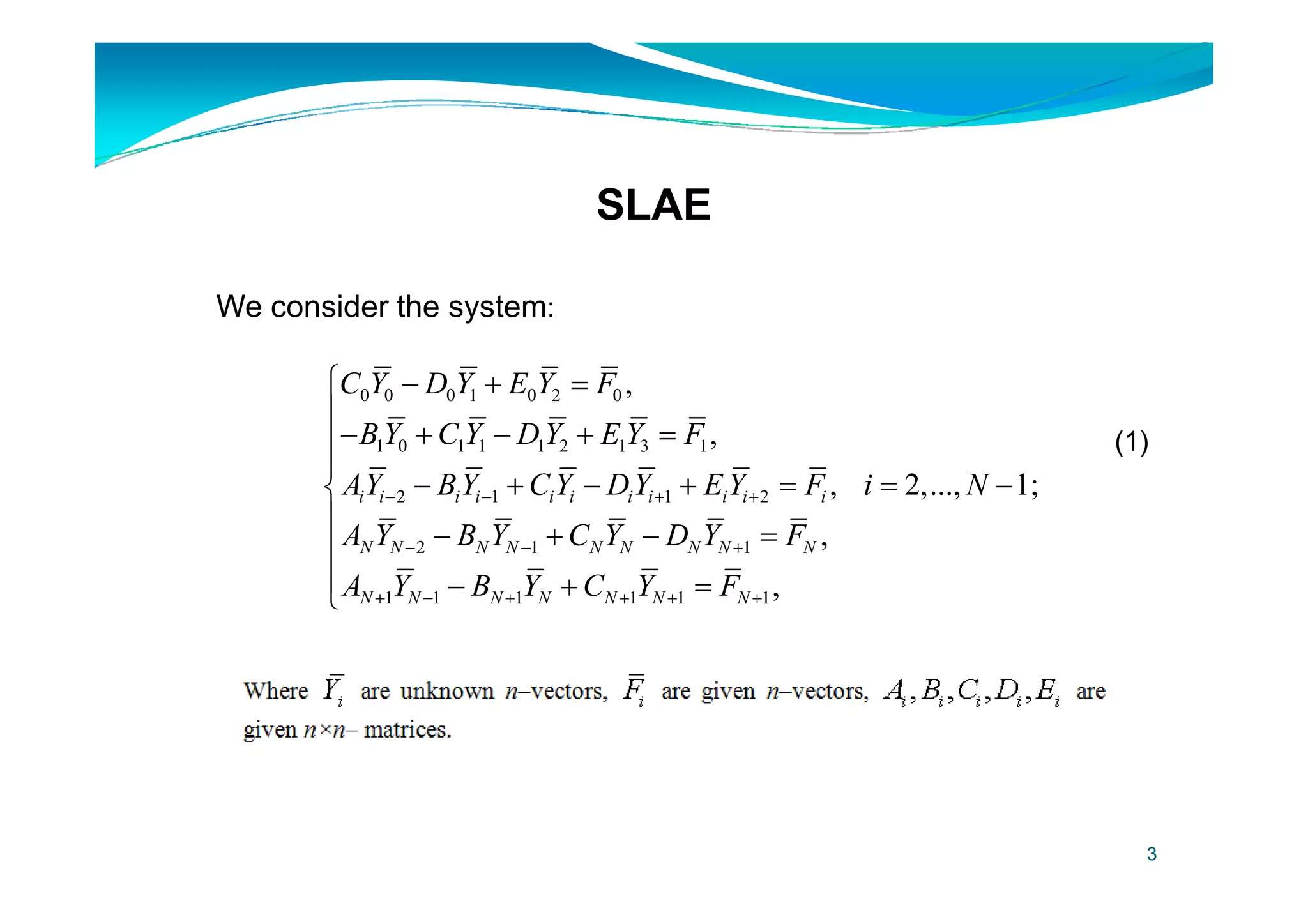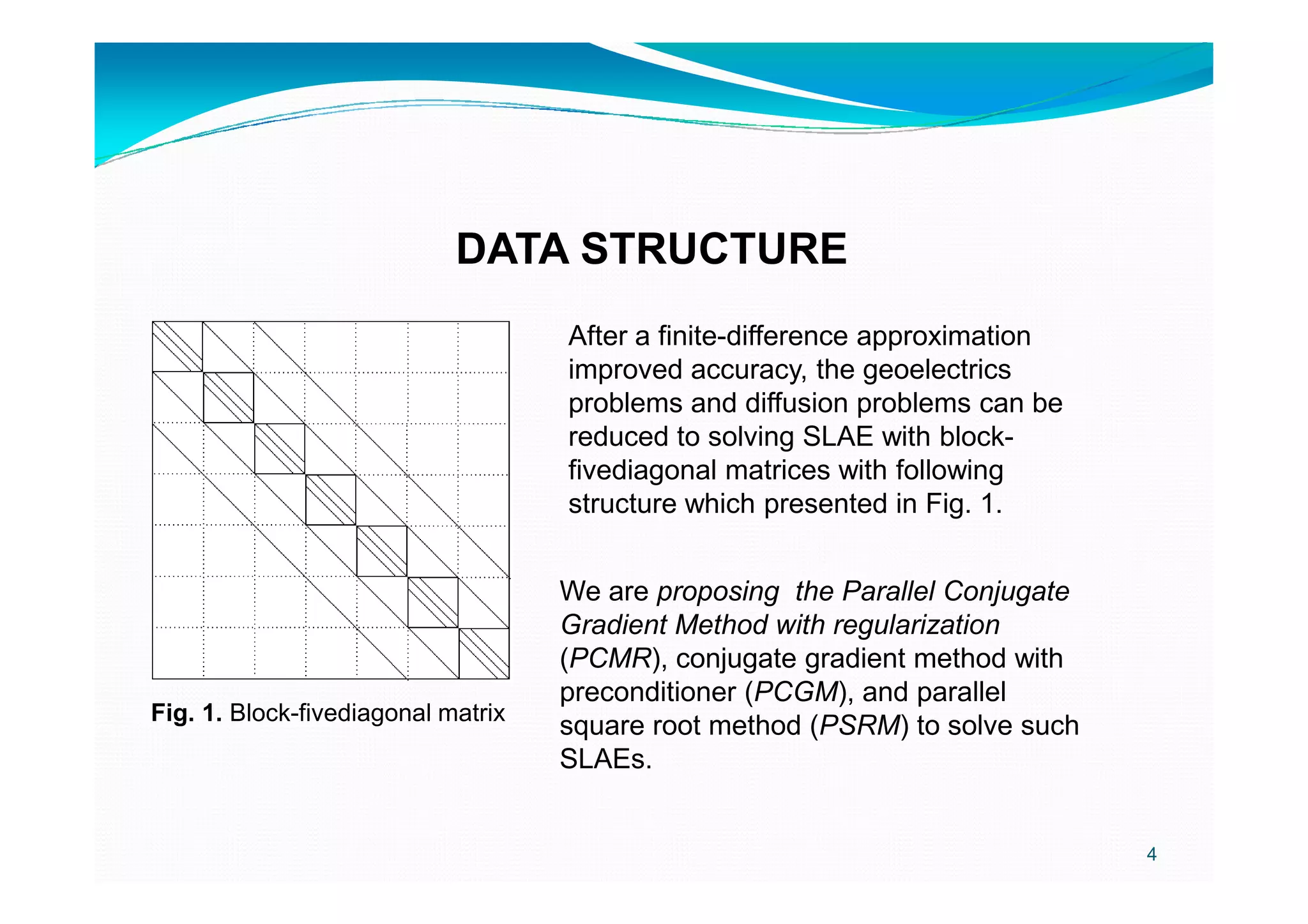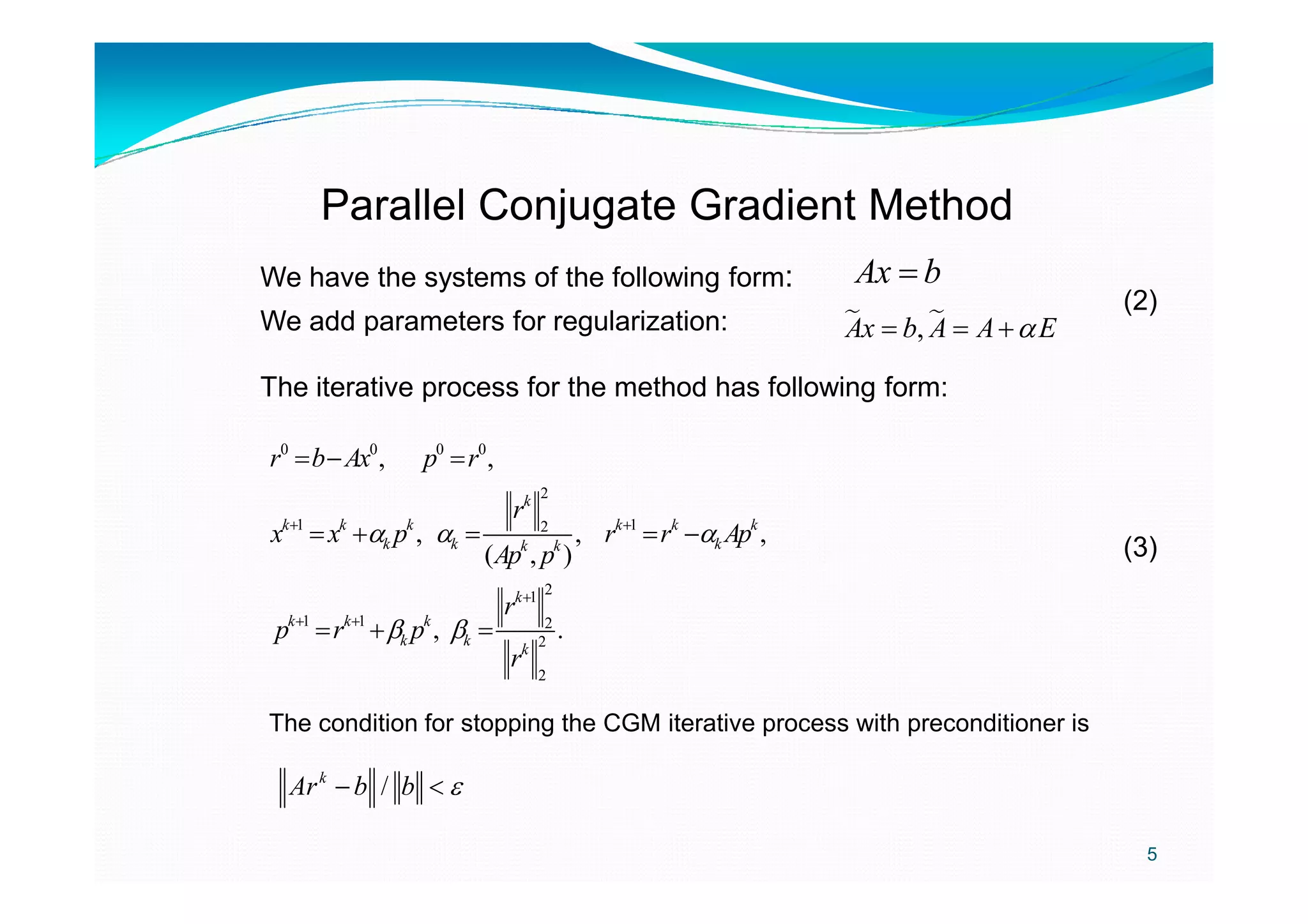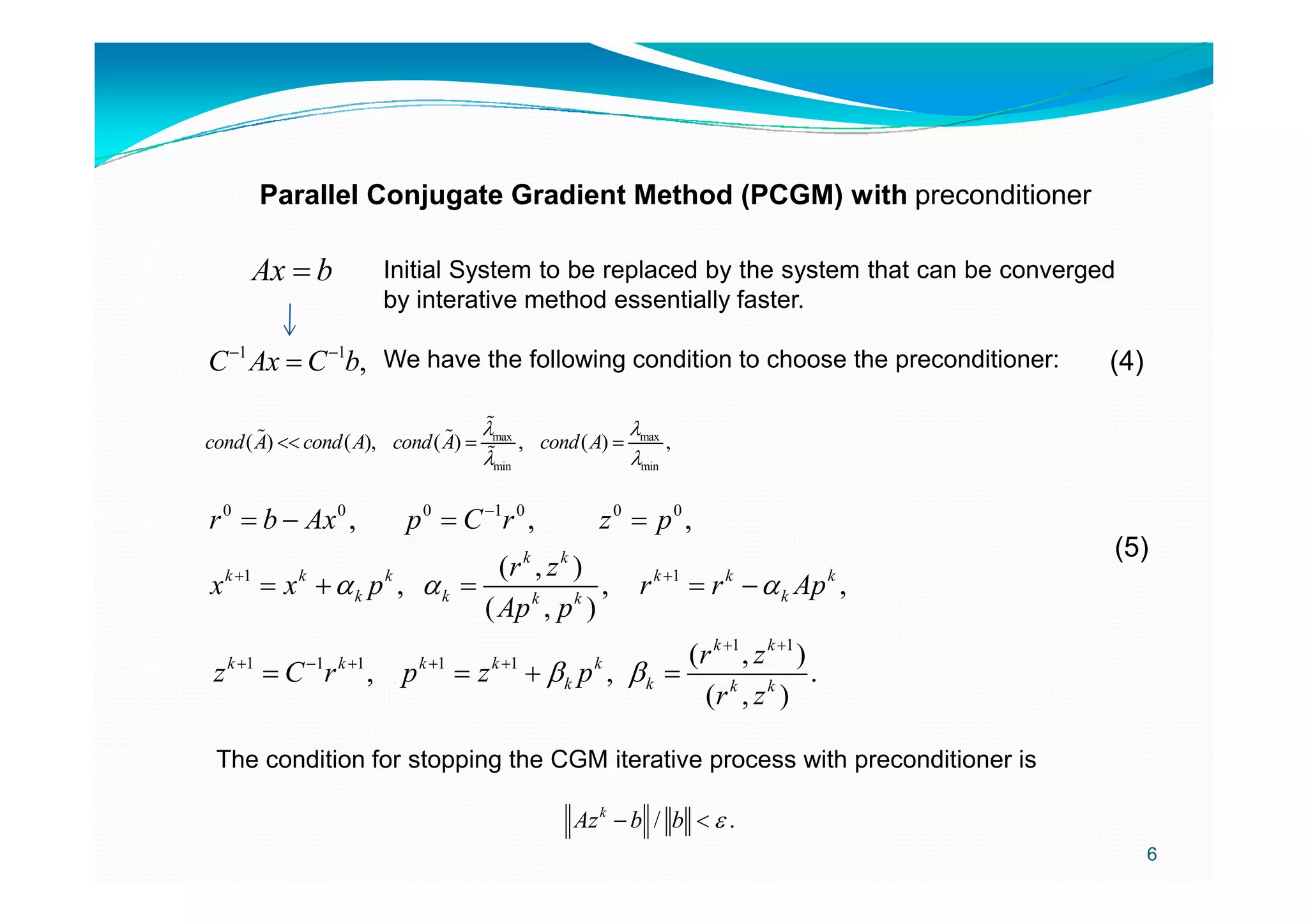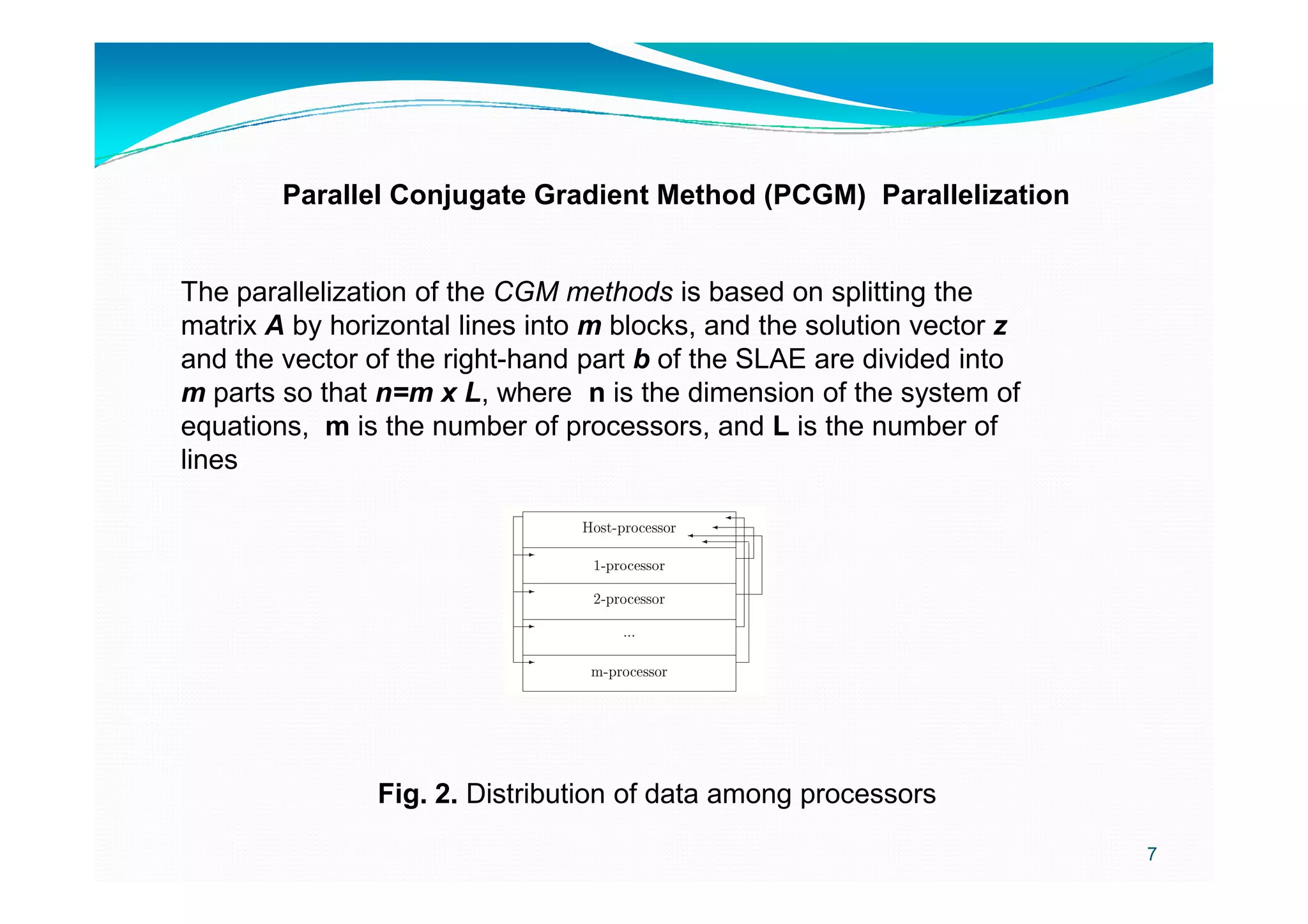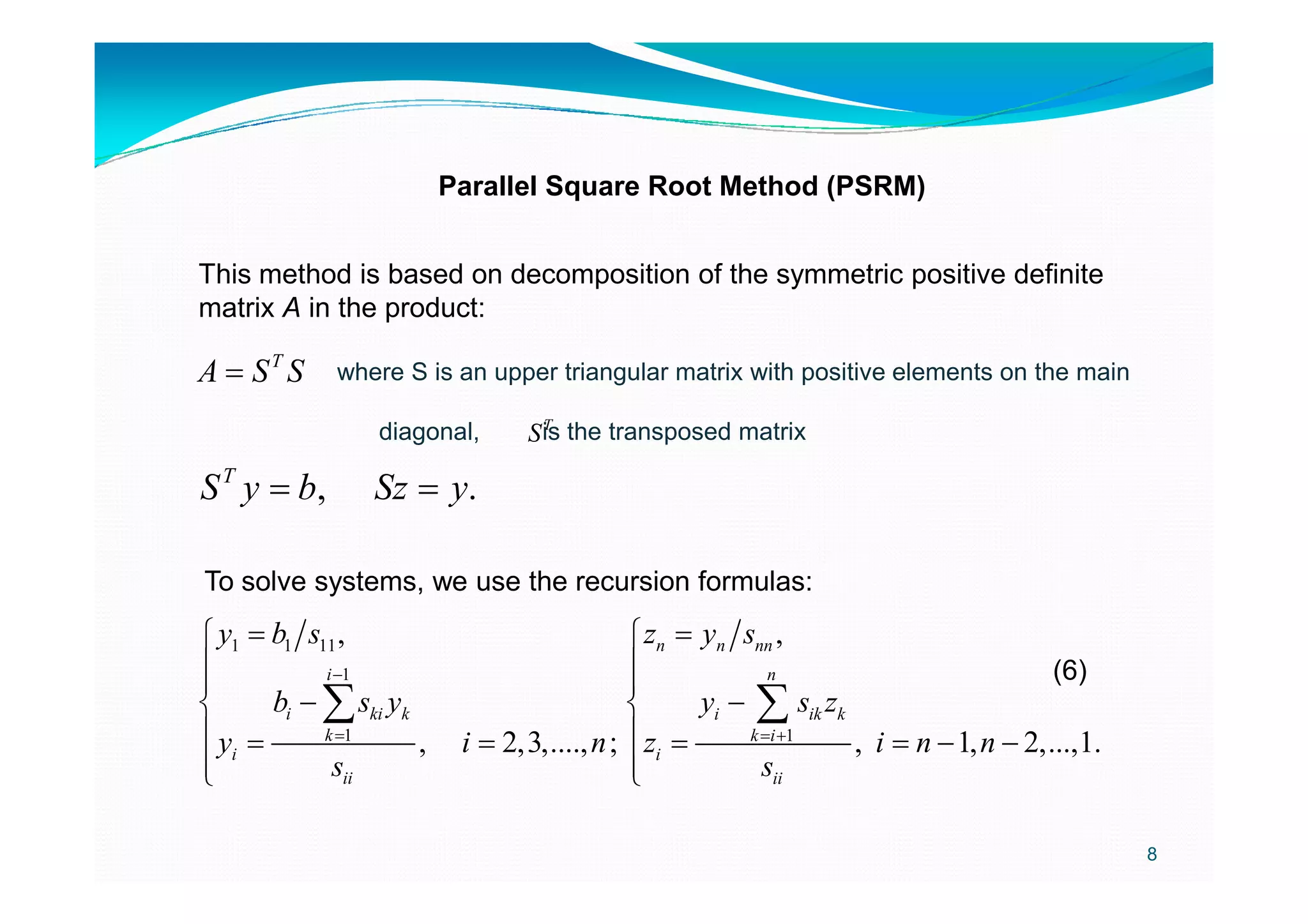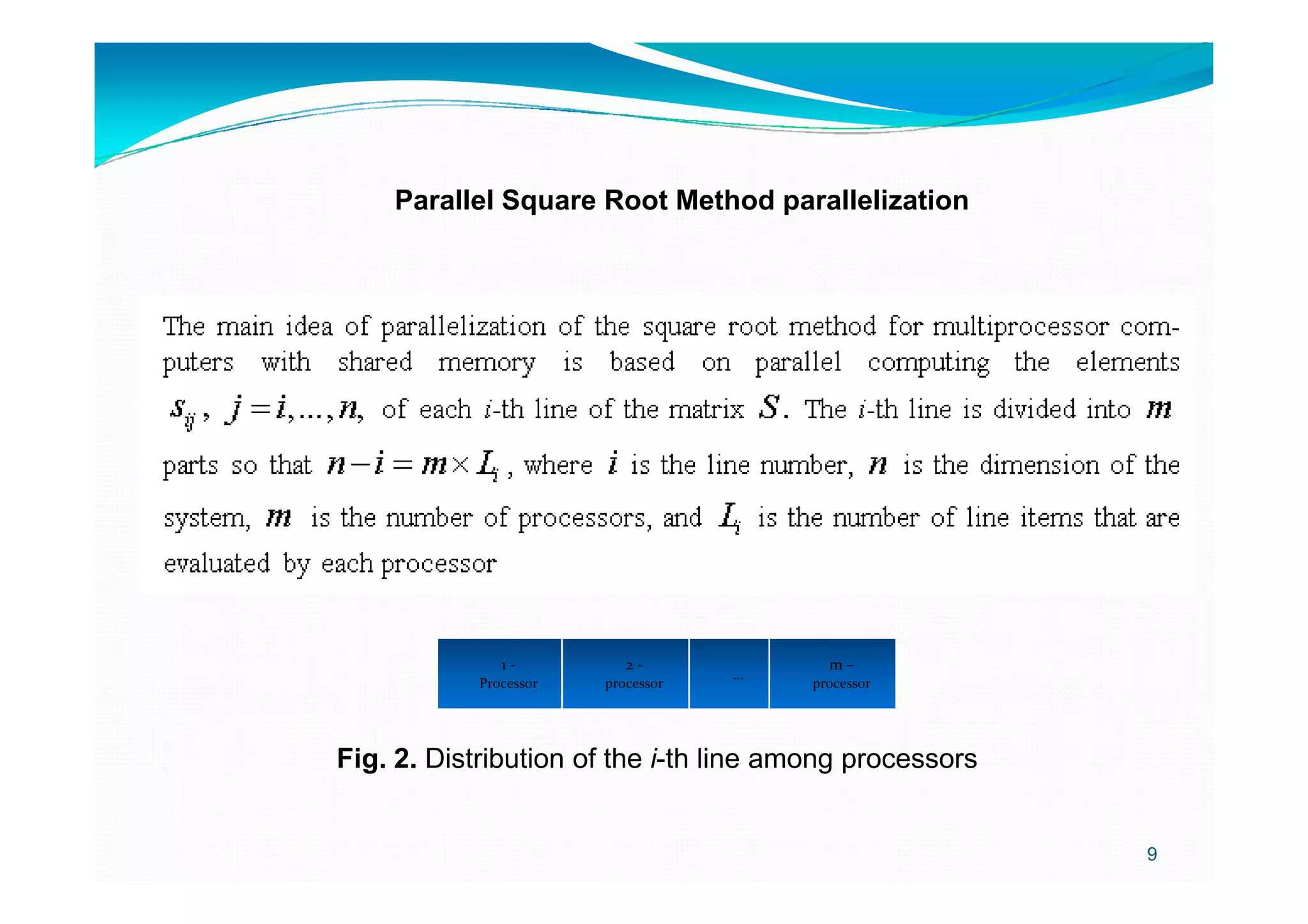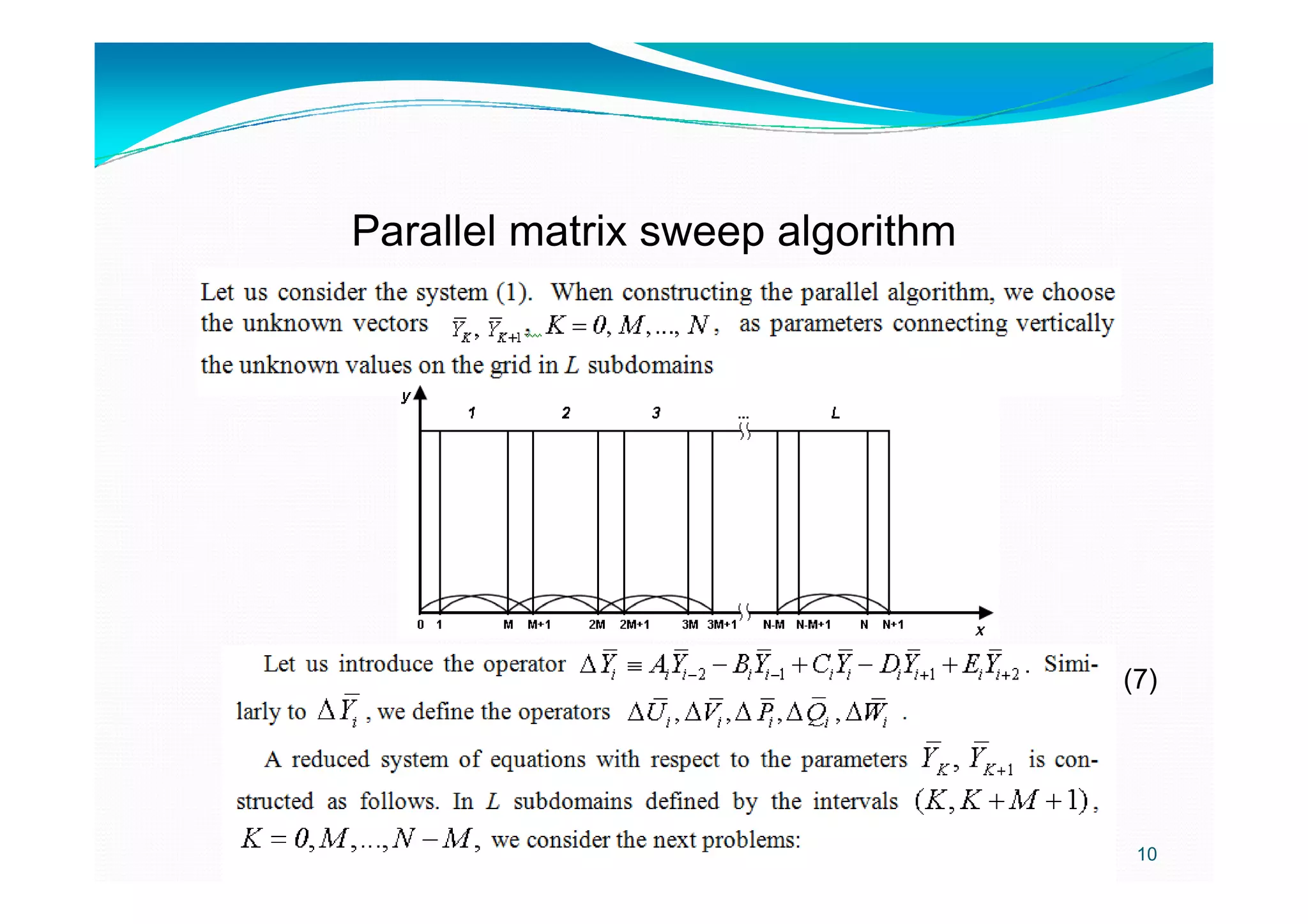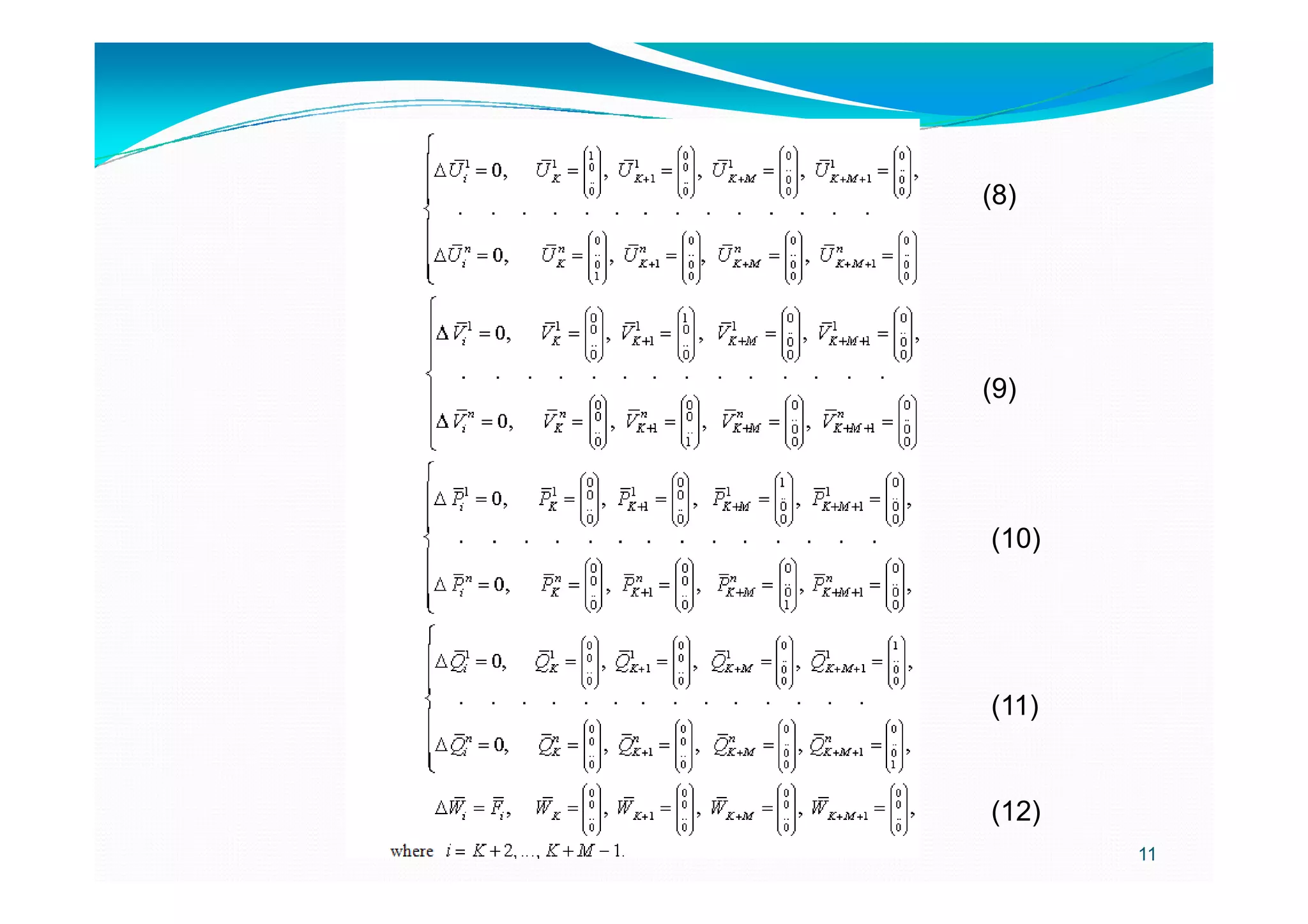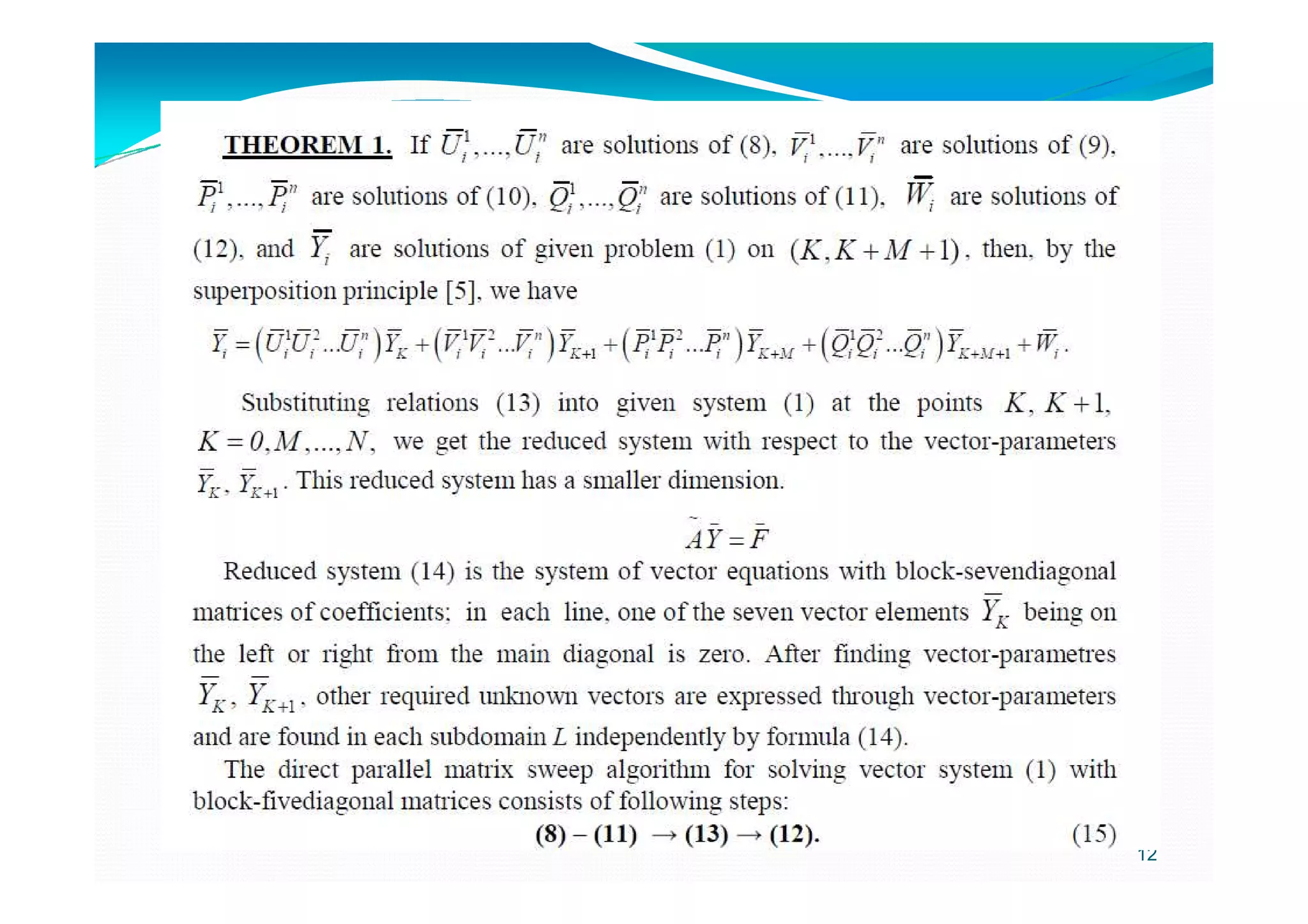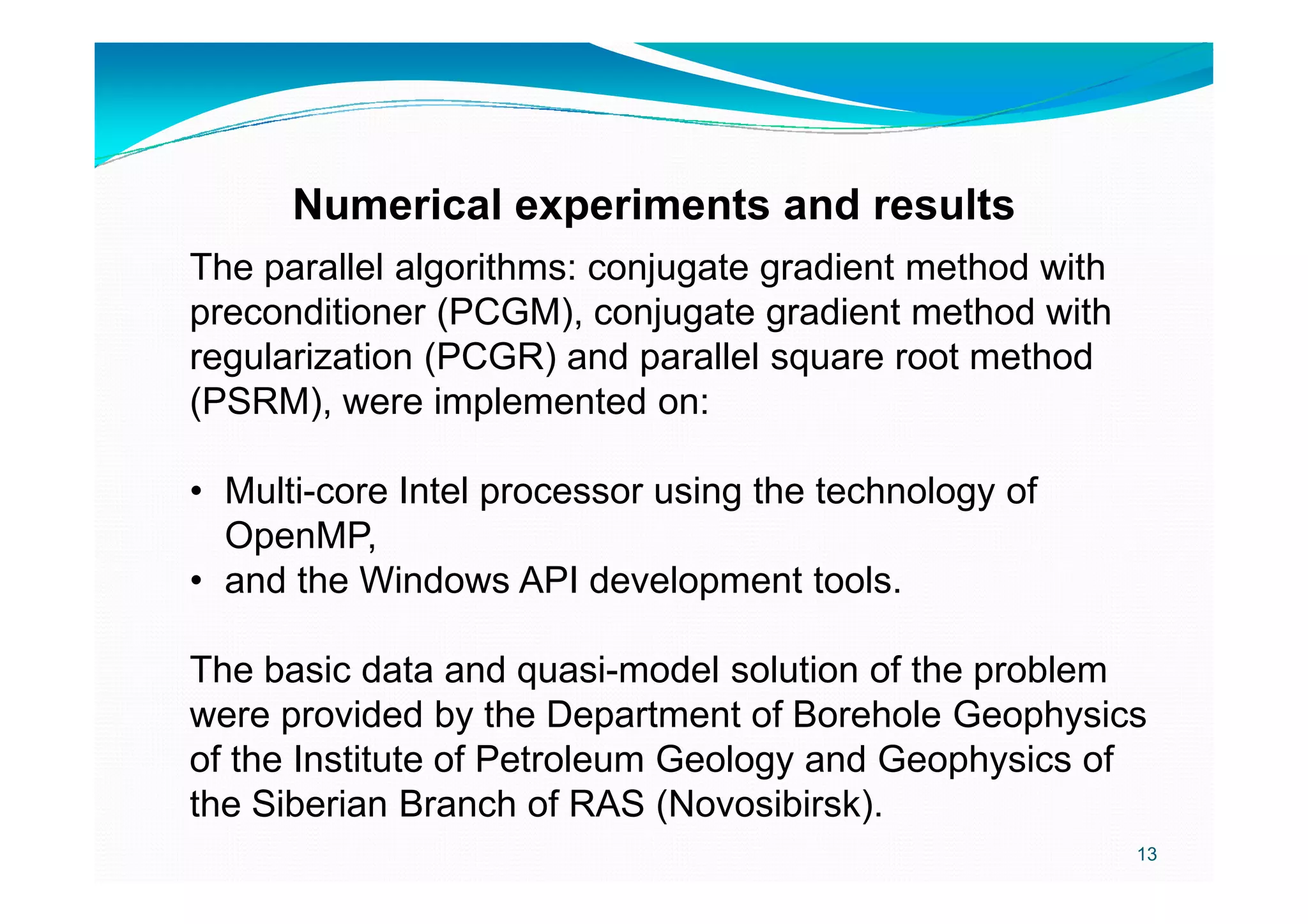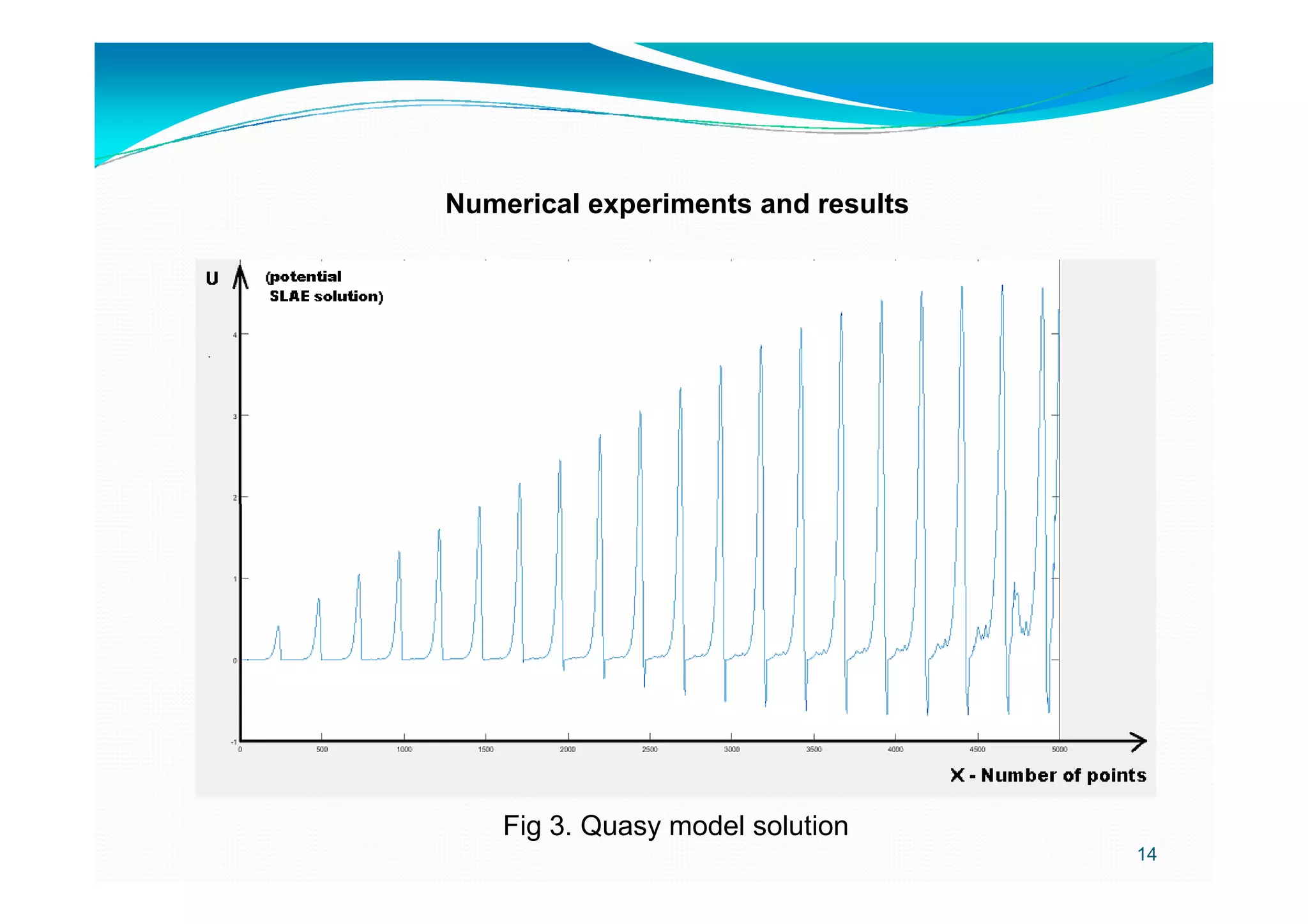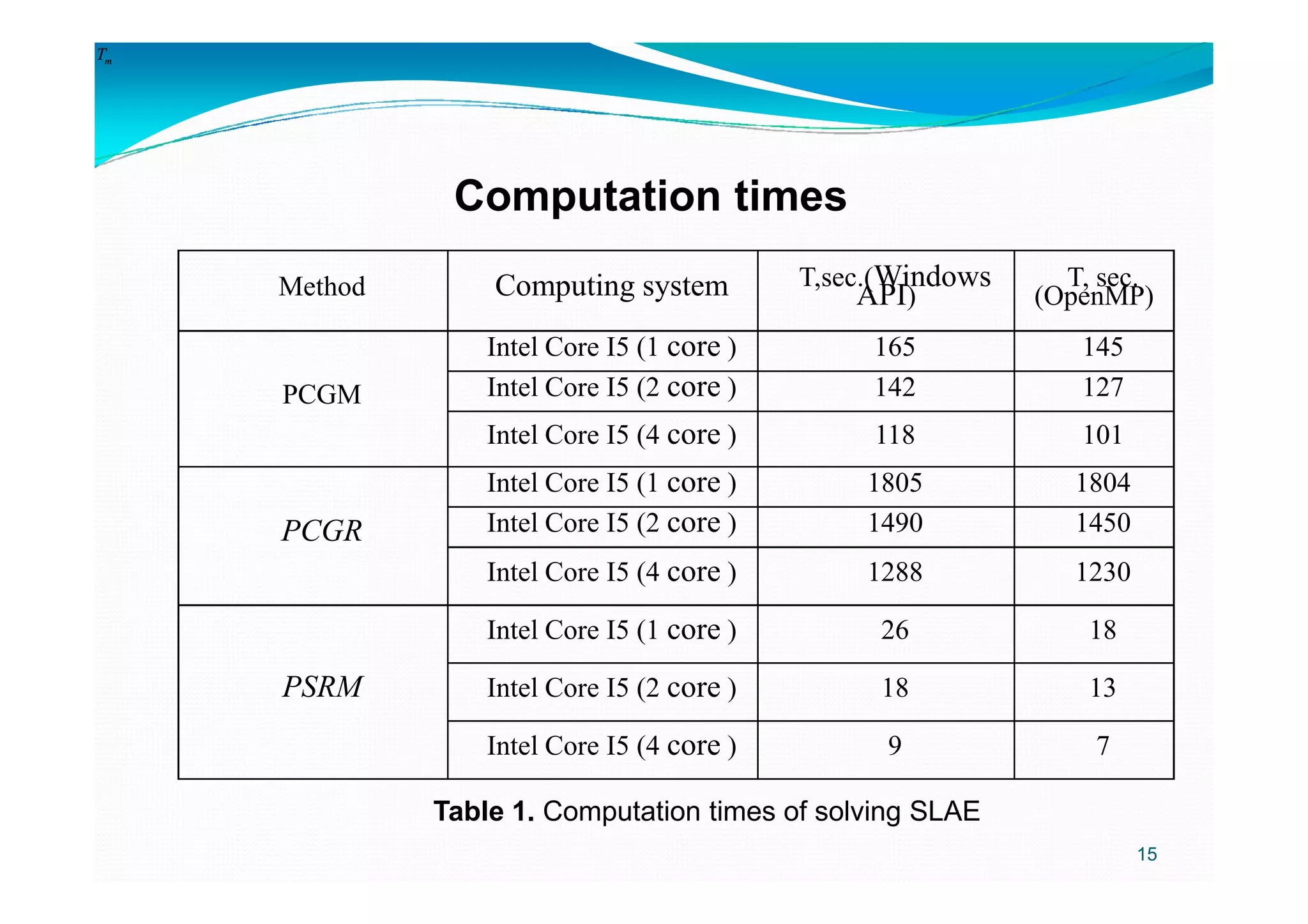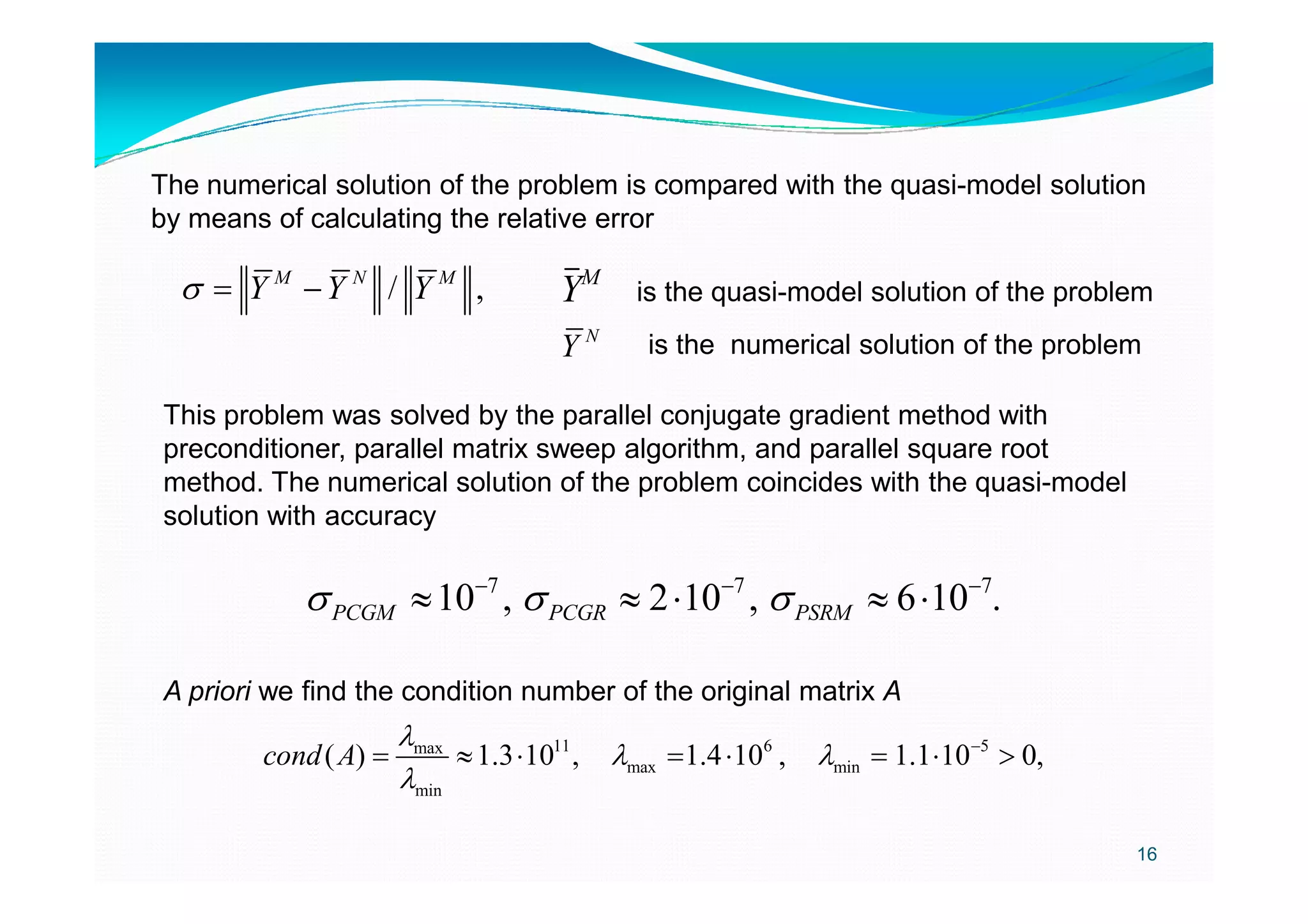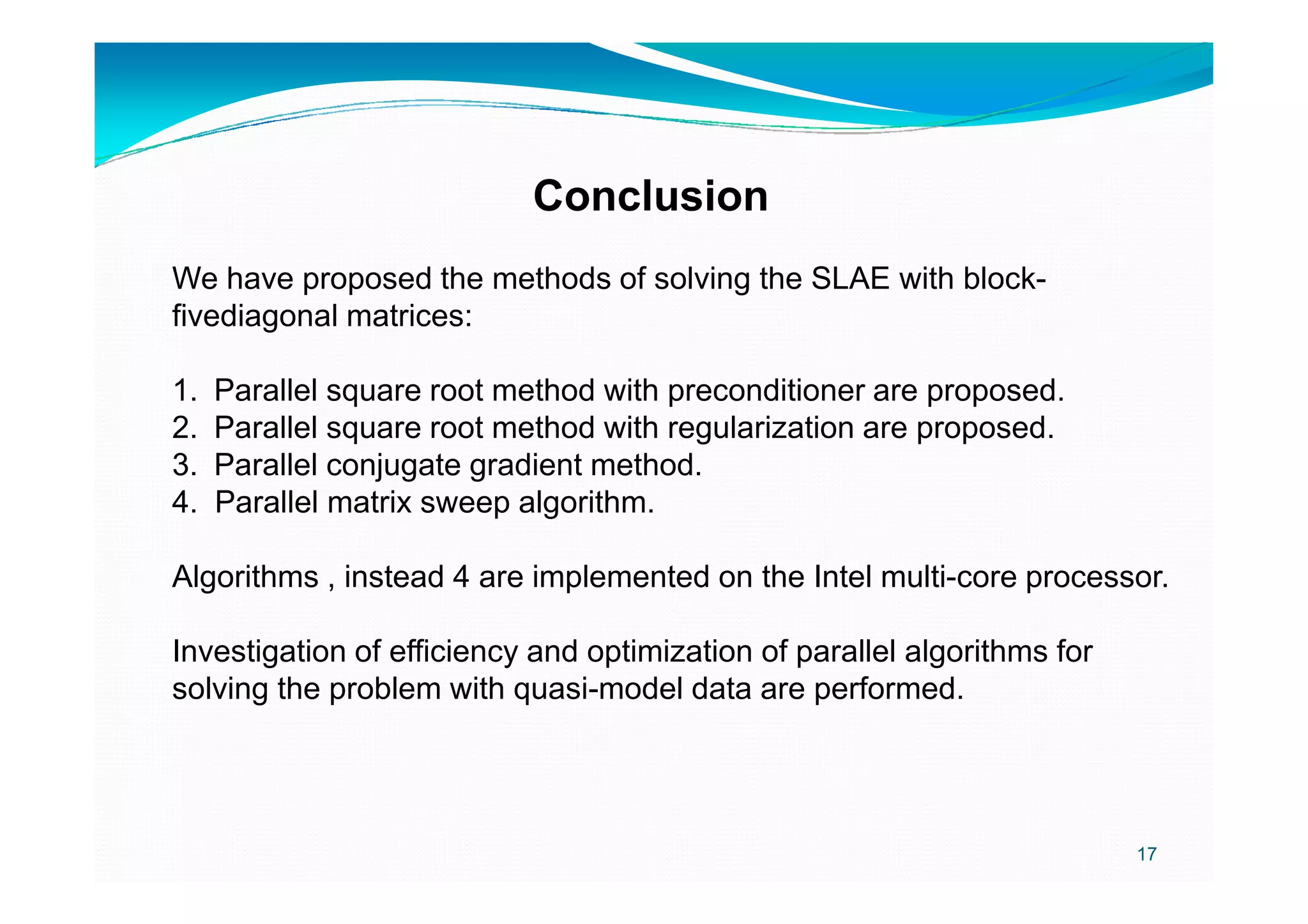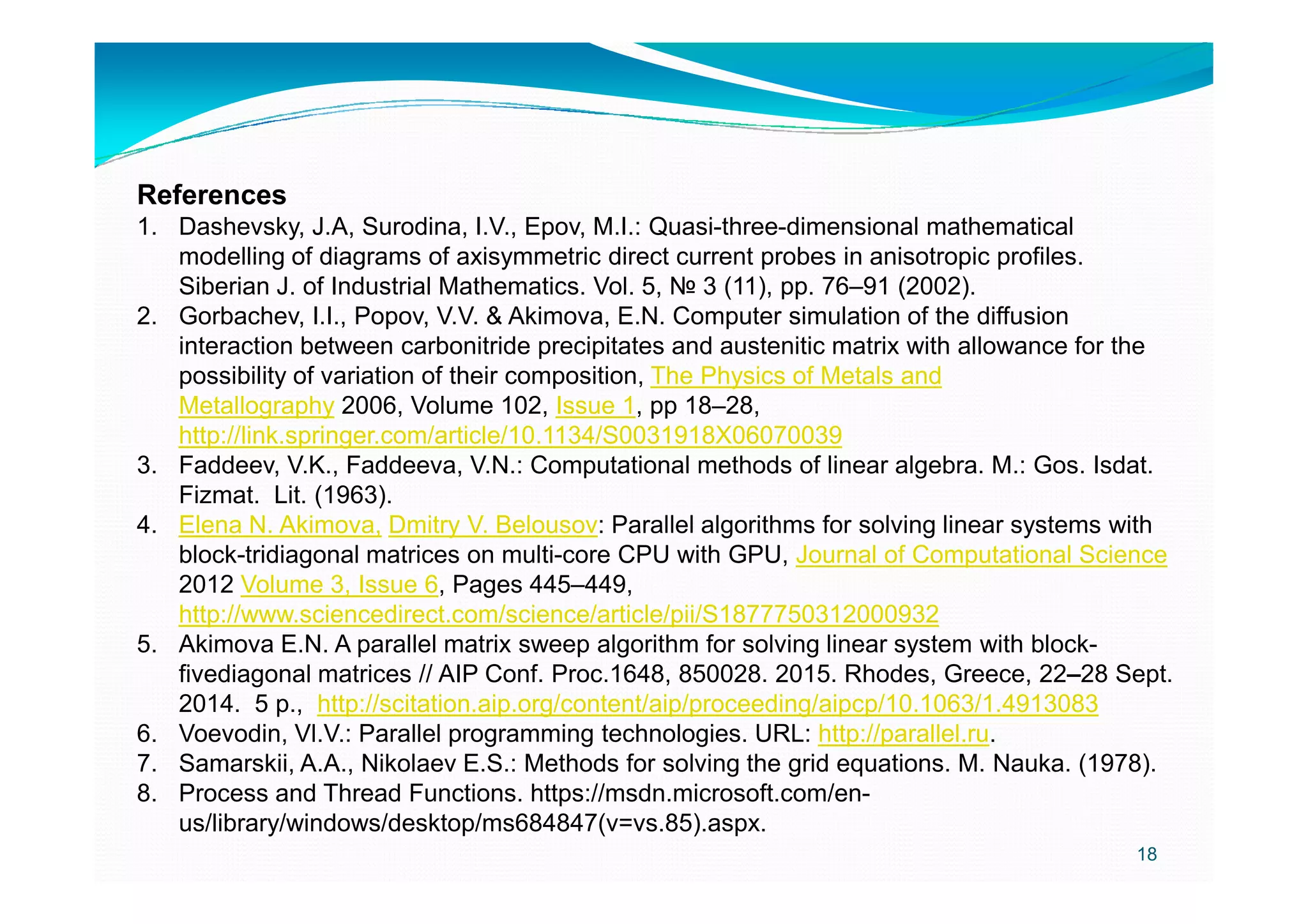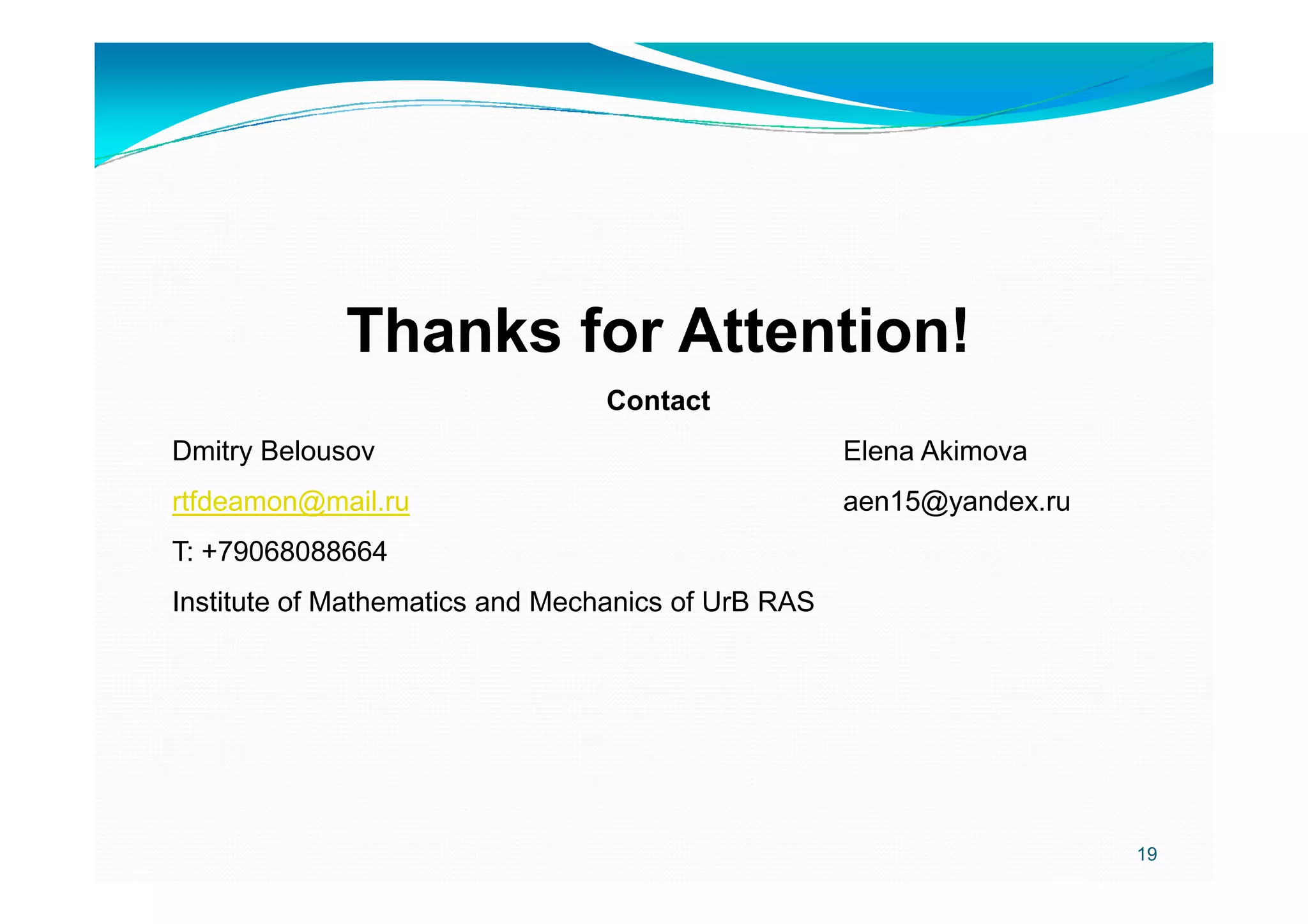This document discusses parallel algorithms for solving systems of linear algebraic equations (SLAE) with block-fivediagonal matrices, particularly for applications in geoelectrics and diffusion problems. It presents methods such as the parallel conjugate gradient method with regularization, conjugate gradient method with preconditioner, and parallel square root method, implemented on multi-core processors using OpenMP. The performance results indicate that these parallel algorithms significantly improve computational speed and accuracy in solving SLAE compared to traditional methods.
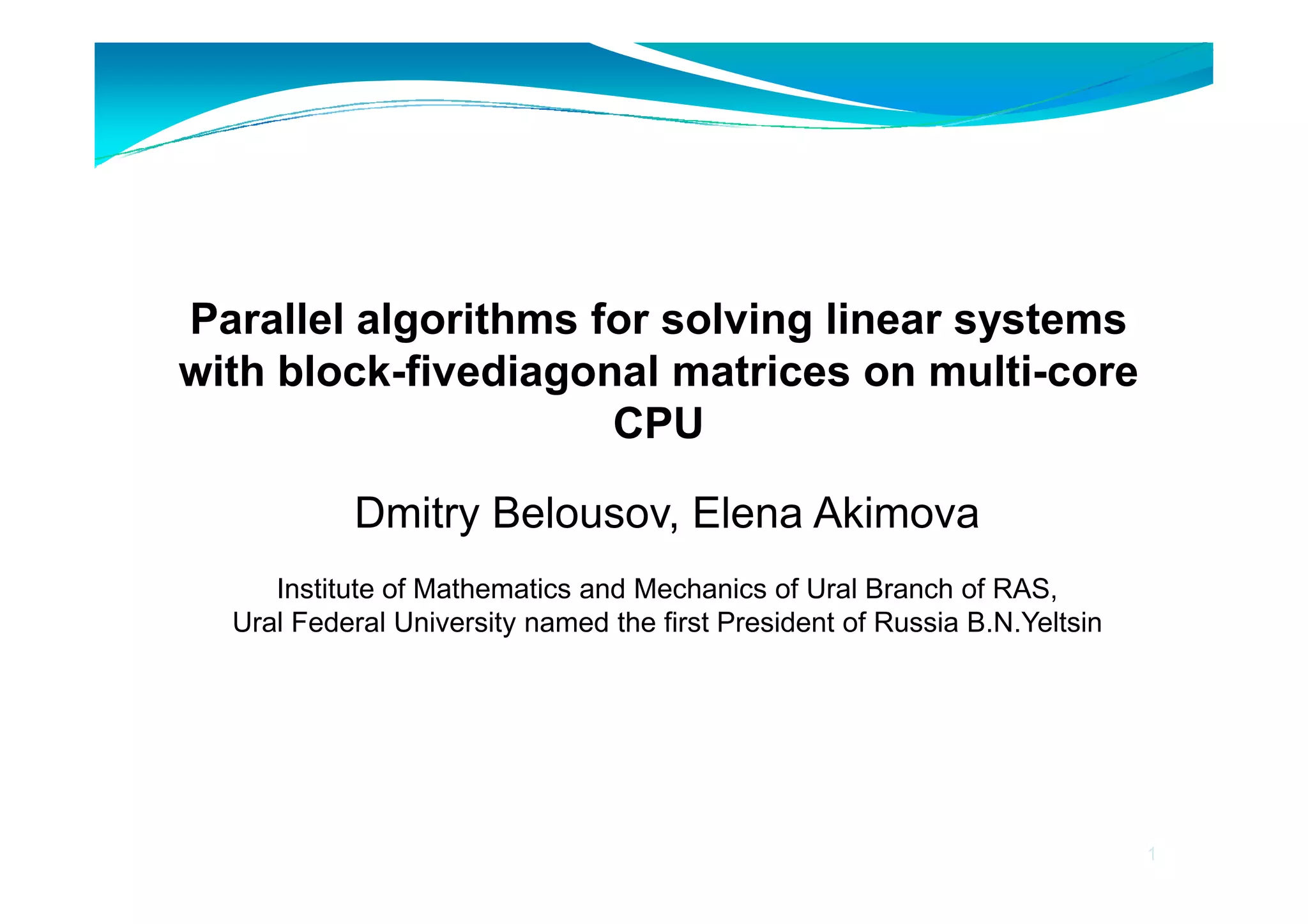
![Systems of linear algebraic equations (SLAE) with block-fivediagonal matrices arise when solving some mathematical modelling problems, in particular, geoelectrics and diffusion problems. Introduction After using a finite-difference approximation with improved accuracy, the problem is reduced to solving a SLAE with block-fivediagonal matrix [1]. 2](https://image.slidesharecdn.com/presentationbelousov1-161008152319/75/Parallel-algorithms-for-solving-linear-systems-with-block-fivediagonal-matrices-on-multi-core-CPU-2-2048.jpg)
